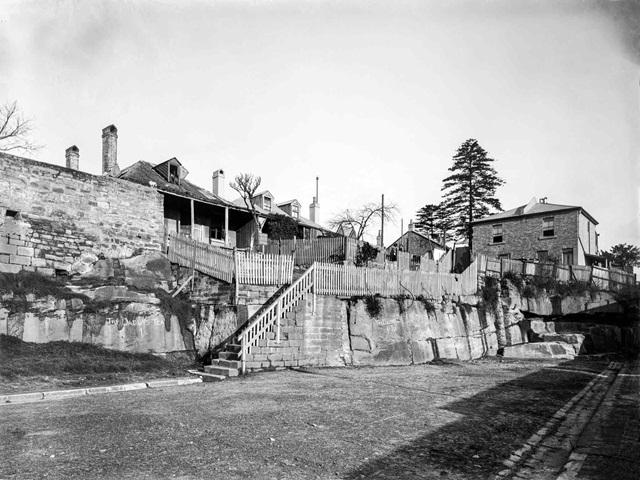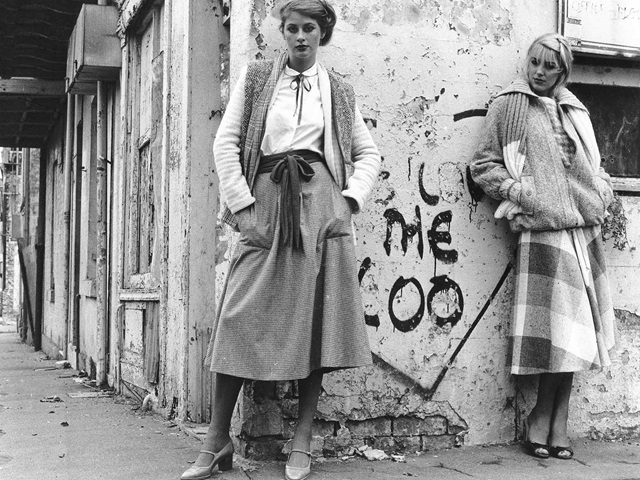History of Trinity Avenue Playground
The land this playground occupies was originally the backyards of houses in Windmill Row, renamed Prince Street by Governor Macquarie in 1810.

Trinity Avenue Playground is located at 24–36 Trinity Avenue, Millers Point.
Windmill Row originally ran along here. One of the first streets in The Rocks, it led to the government stone windmill at Dawes Point. As the most important street in the area, Governor Macquarie renamed it Prince Street in 1810. Over time the name morphed from Prince Street to Princes Street. Part of this land was owned by Andrew Byrne, who arrived as a convict in 1800 and by 1822 had large land holdings including properties in Princes and Fort streets.
The Garrison Church (Holy Trinity) was built on land which Andrew Byrne claimed he owned, although his claim was not recognised and no compensation was paid. In the 1890s the owners in Princes Street subdivided their backyards and built houses here, which were known as 24–36 Upper Fort Street.
Andrew’s son-in-law William Byrne was one of these owners. He died at his Princes Street home in 1906 at the age of 98, having been born in Sydney in the year of the Rum Rebellion.

The street name was changed to Trinity Avenue in 1899 after nearby Holy Trinity Church. The church was also known as the Garrison Church because it was used by members of British military regiments stationed in Australia.
By the 1920s the construction of the Sydney Harbour Bridge had begun and Princes Street disappeared under the bridge approaches. The houses here were demolished and the land was owned by the Department of Railways and Sydney County Council until it was leased for a playground in 1962.
Local women asked to be allowed to continue hanging their washing on the site, as their yards were too small and shady. Council refused this request.
Further reading
Larry Turner, ‘Andrew Byrne’ in Bob Reece (ed), ‘Irish Convict Lives’, Crossing Press, Sydney, 1993



